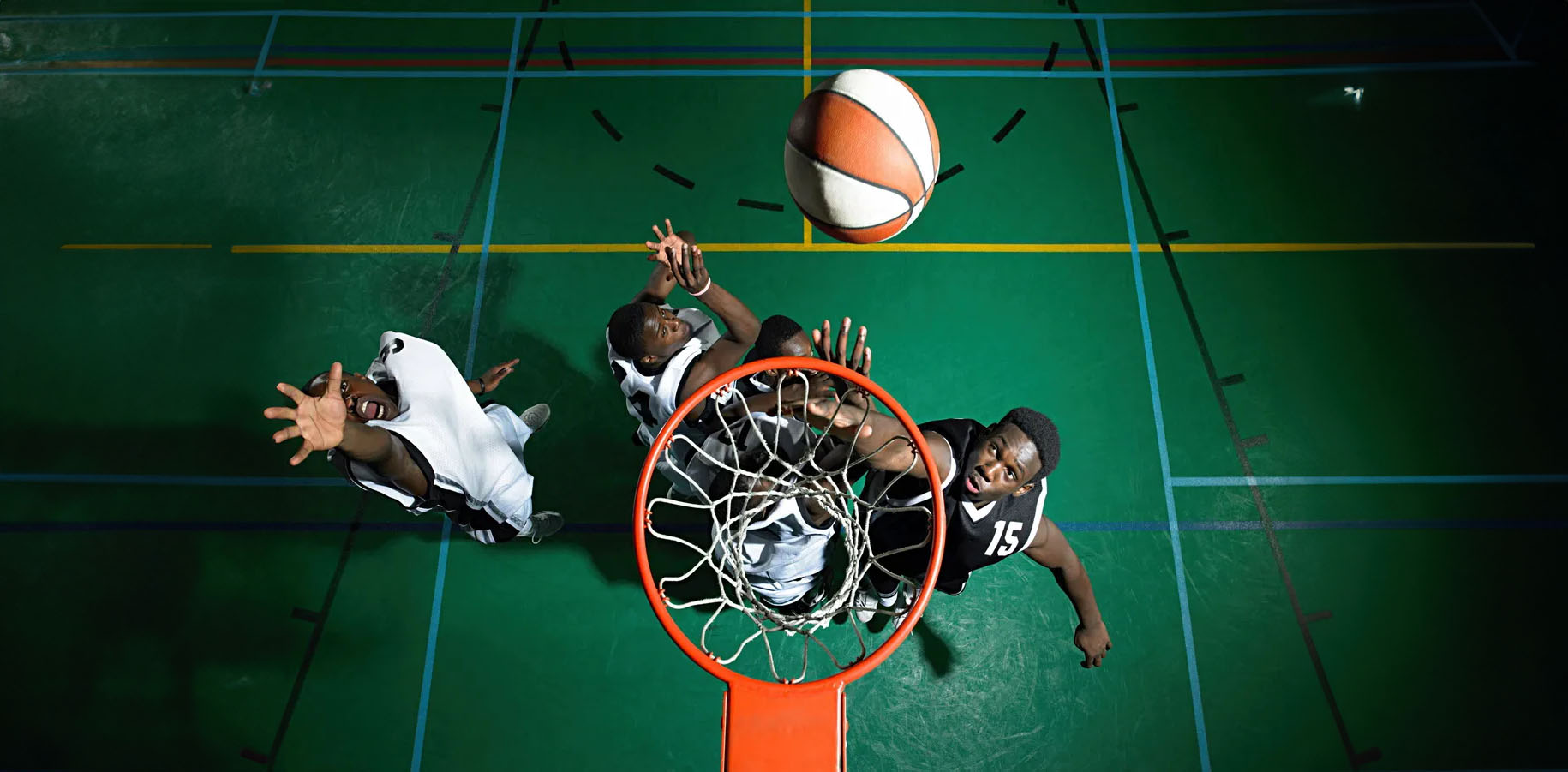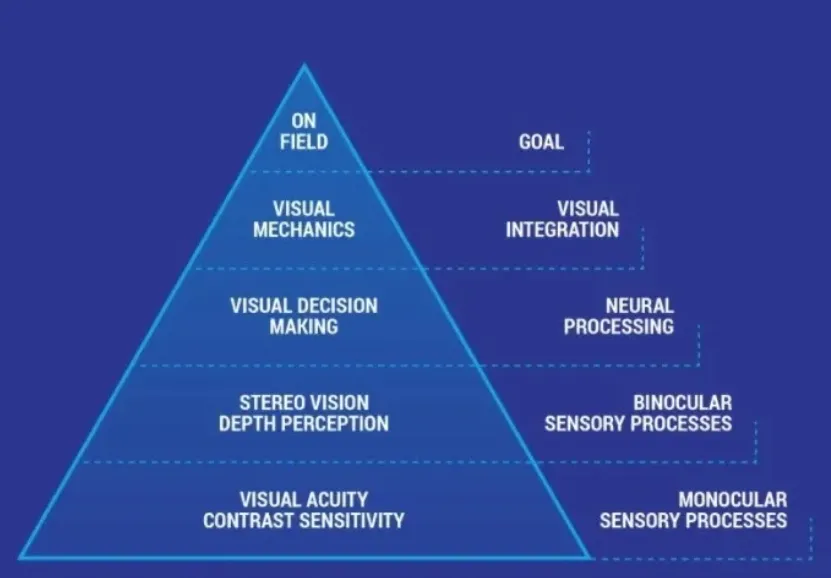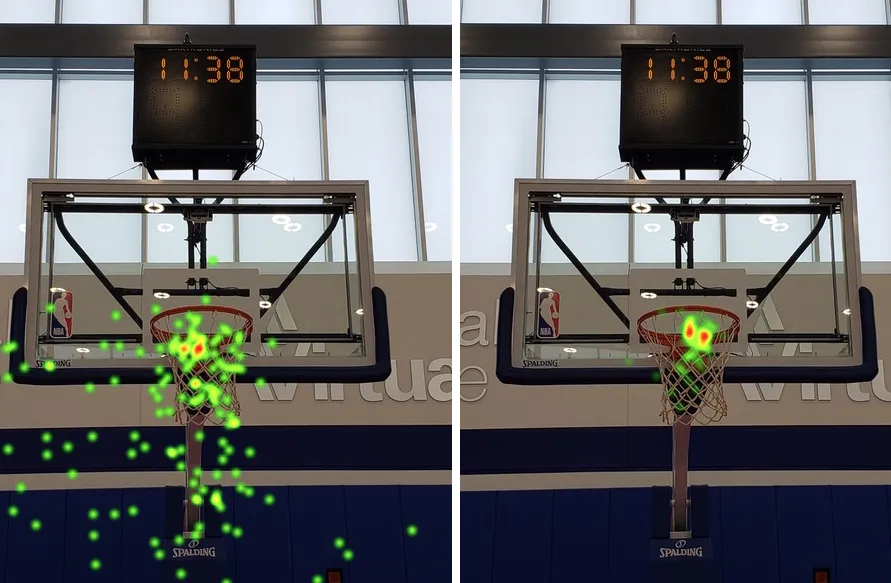Blog

Dr. Daniel Laby (Director of Sports Vision) is a rare combination of expertise, wisdom, and lightheartedness with an unwavering dedication to performance improvement. His laid-back approach makes you want to sit and listen to him for hours. An ophthalmologist by trade, Laby has been researching sports and vision for over three decades, working with some of the biggest names in Major League Baseball (MLB), football, and basketball.
His story began back in the early nineties while he was a fellow at UCLA, doing research in pediatric ophthalmology. After a lackluster performance in the 1992 season, the Los Angeles Dodgers drafted Laby to help them complete a sports performance project they were working on. I think it’s worth adding some context here. Back then, the use of data-driven analysis in sports wasn’t as widespread as it is today. At that time, heart monitors, for example, were expensive gadgets used primarily by professional and elite athletes, and the use of video footage (which was becoming cheaper and more accessible) was emerging as a technique for performance assessment.
A self-confessed nonathlete, Laby never intended to dedicate his life work to sports performance. Still, opportunity sometimes knocks in the most unlikely of forms, and that initial draft with the LA Dodgers led to him becoming a sports performance guru.
Earlier this year, I got to sit down with Dr. Laby, and this post is my account of our conversation. Among other things, I will share how he has used our wearable eye tracking glasses in a baseball study to figure out what happens in the 125 milliseconds (or thereabouts) between the moment a pitcher throws a ball and a batting baseballer has to decide how to hit it. During our conversation, I was struck by his thinking about how to leverage vision-related training for everyone and everyday activities, not just professional athletes. Enjoy!
Q: So, Dan, tell us about how it started. How did you end up working in Major League Baseball (MLB)?
A: I was doing my fellowship at UCLA in pediatric ophthalmology, caring for kids with vision impairments. The university was working with the Los Angeles Dodgers, and they needed someone to help finish up the project. I got drafted! At the time, I had no intention of specializing in sports, and I wasn’t particularly athletic. But the project seemed interesting because it was innovative for the time. So instead of following the traditional path of an ophthalmologist — finding ways to help people — I found myself digging into vision and how to leverage it to help people perform better. It was different, new, and I found it stimulating.
At the time, there wasn’t much literature on vision performance in scientific journals, and for me, it was an immense opportunity. That’s how it all started, and it’s grown from there.
Q: Tell us about your company, Sports Vision. What's your vision (no pun intended)?
A: Our primary focus is to help athletes improve performance. In addition to sports organizations, we’ve worked with New York City taxi drivers, for example, enabling them to identify pedestrians better. And then, I was working with this wonderful lady who had a spate of fender benders due to a disease that affects her peripheral vision. We used the same vision techniques we have developed for the sports industry to make her more aware of her periphery.
Q: How developed is the field of vision-related performance?
A: The biggest challenge, and one of the reasons why I am so passionate about what I do, is awareness. The insight that our vision processes reveal is massive, but we are very much in the early days of understanding how to use that insight to create some kind of advantage — be it on the field or tennis court, anywhere.
Ask any athlete; I’m pretty confident they would say that vision is critical and that you need to play with your eyes open. People in sports understand the role of sight, but I am not sure they are as aware of the tight coupling between vision and cognitive function, even if that is changing. Everything you do is related to the information your eyes feed your brain with, how you make decisions based on what you see, and how it translates into motor action. If you will, this chain of command is critical for performance, and that’s the connection Sports Vision is helping people make.
My goal is to help people understand that perfect visual acuity (or 20/20 vision) is the tip of the iceberg — or the bottom of the pyramid, as I like to call it. There’s much more above the simple fact of seeing that you can leverage to improve performance.

The sports vision pyramid
Q: So, how does Tobii’s technology help you in your work with athletes?
A: I’ve already alluded to my sports pyramid, and you can read more about that in this post, the sports vision pyramid. The pyramid is about looking at the visual acuity of a person’s eyes separately and as a pair and how that translates into decision-making and motor action — such as scoring a goal, hitting a home run, or serving an ace. Tobii glasses provide all the information I need to connect the dots.

Q: How do you use the data to figure out the decision-making to action process?
A: There are a couple of ways. One approach is to examine the heat map of the player’s gaze pattern, which you can generate with Tobii’s analysis software (Tobii Pro Lab). I can tell you about one study I did with a bunch of basketball players. Each player was given 30 attempts to shoot a basket; some scored 100 percent, while others were down around 50 percent. The underlying reason for the disparity is evident when you look at the heat maps, and the good thing is, you don’t need to be a scientist to see it.
The gaze pattern for players shooting 30-out-of-30 was tightly clustered, focusing on a particular point above the rim. The pattern for players who scored fewer baskets was spread across the backboard.
This is the sort of insight that eye tracking brings to the table. You can’t see what a player looks at or the consistency in their gaze pattern through manual observation — you have to have an eye tracker. Even if you ask the player what they focus on, they won’t be able to reliably tell you.
There are other ways to interpret the data provided by Tobii’s glasses. You can look at each gaze pattern individually to see where the athlete dwells and for how long. The clip below, for example, shows what the batter focuses on as the pitcher releases the ball.
Blog
 Back to top
Back to top

 Share
Share
